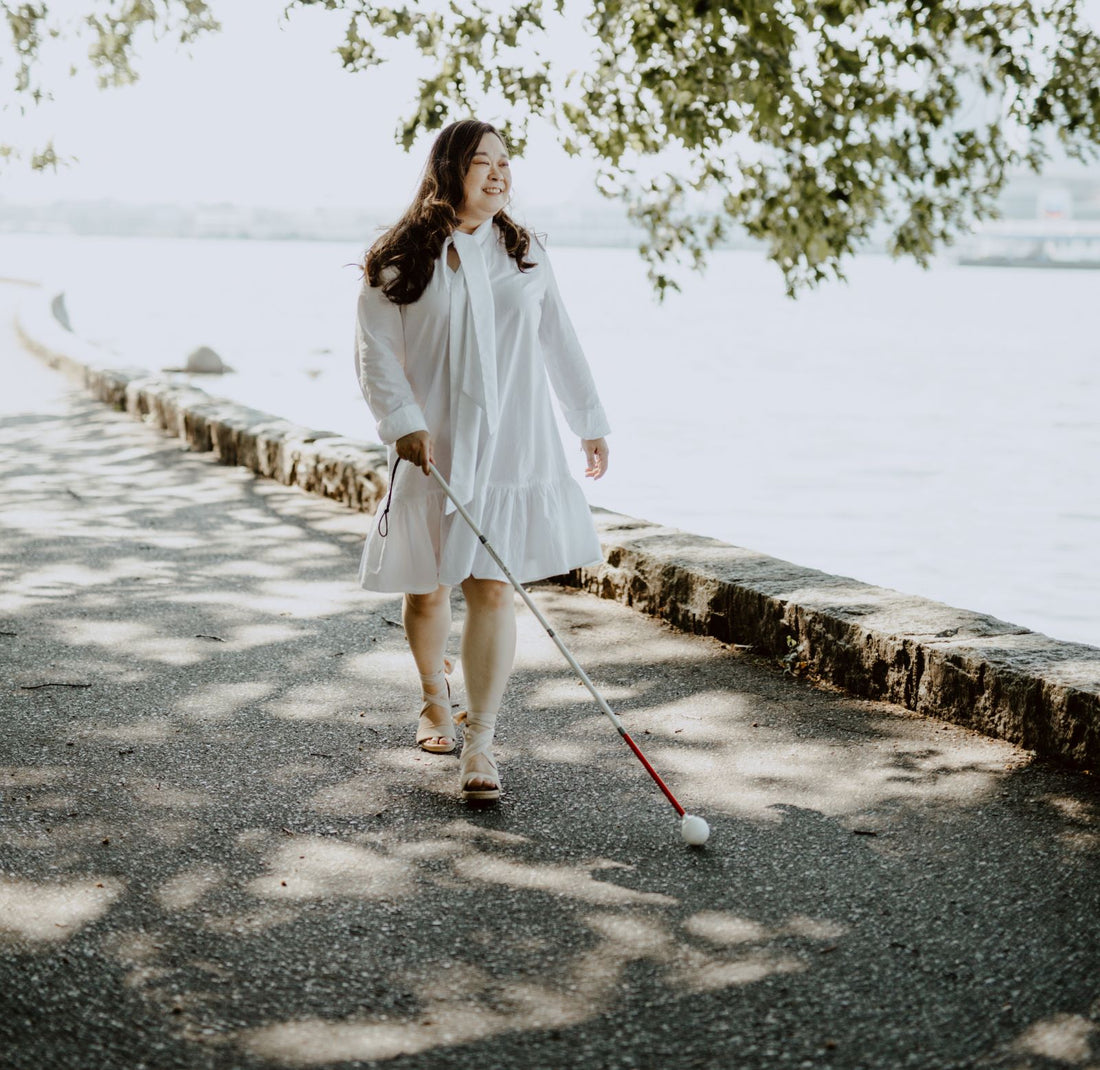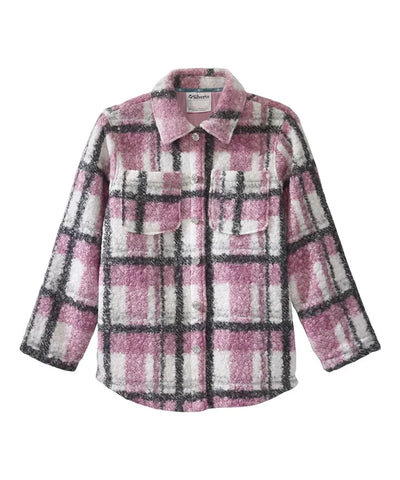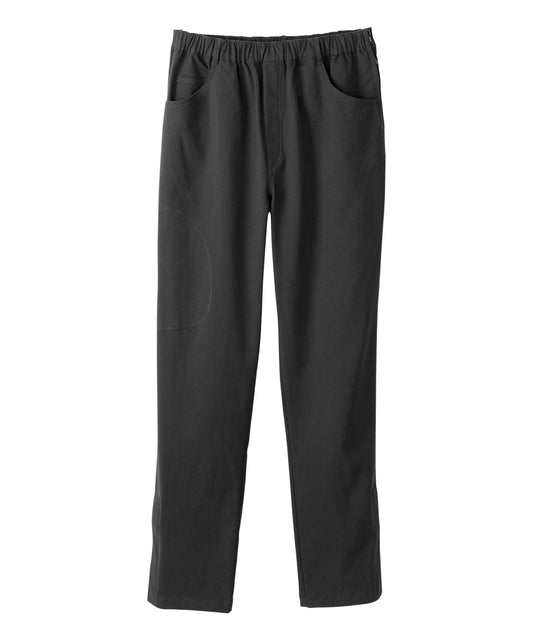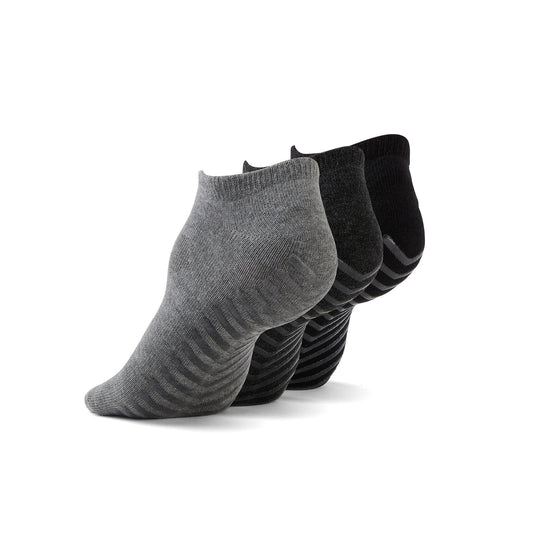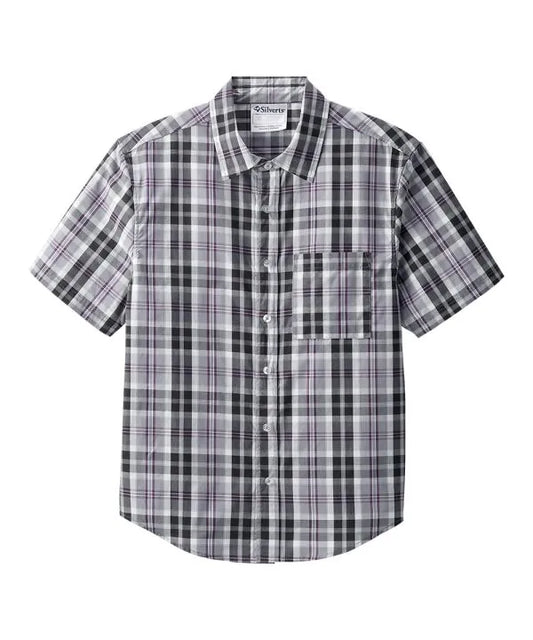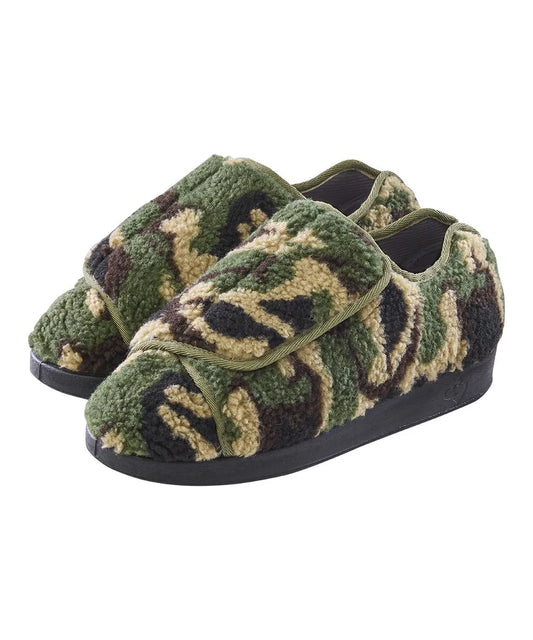Written by Anne Mok
Does fashion and being stylish have to be different when you’re blind or visually impaired?
For me, as a blind woman – absolutely not!
Clothes and fashion are a way to express ourselves and just because I am blind doesn’t mean that I don’t care how I look or feel. I want to be able to dress myself and still be fashionable.
Are there adaptive fashion options for the blind and visually impaired community?
This blog post will explore how designers can incorporate thoughtful design into clothing and accessories that are adaptive to not only the blind and visually impaired community but also the needs of a diverse group of people.
We’ll also look at tips to help organize and care for our clothing. With this information, readers can gain a better understanding of the benefits and associated challenges of adaptive fashion and how technology plays a role.
5 examples of thoughtful design to make fashion adaptive:
1. Fabrics – I look for clothing made of material that is easy to care for. Most of these I would label as “travel friendly”. I want clothing that is wrinkle-free, comfortable, breathable and provides ease of movement. As a white cane user, I can become very stressed as I am trying to navigate in unfamiliar spaces and the last thing I want to feel is uncomfortable, overheated, and worrying about my clothing.
2. Clothing that is easy to put on – I look for clothing with easy to use snap buttons that I can feel, pull-on pants, or one-piece dresses. I have a winter jacket that has a magnetic closure that is especially helpful.
3. Pockets are a must! They are like an extra set of hands to hold things and keep things nearby so I don’t lose them while I’m out and about.
4. Convertible Purse/Bag – I love my purse that converts from a crossbody, over-the-shoulder and backpack. This is super helpful keeping my hands free especially as a cane user.
5. Shoes – comfortable shoes that have good grip and are slip resistant. Being visually impaired we are at a higher risk for trips and falls. I have been able to find some stylish slip-on options of runners, Chelsea boots and even wedge sandals with hook clasps to make it easier to put on.
With all our clothing and accessories it’s so important to be able to stay organized, keep things in the same place so we can find them, and take into consideration how to care for them.
Here 5 tips to for the blind and visually impaired to organize their closet:
- There are apps that can help you identify the colour of your clothing (BeMyEyes, Aira)
- PenFriend 3 Voice Labelling System
- Make organizational systems of combining an outfit together on a hanger
- Use everyday items to make your own labelling system
- Arranging clothing by contrast
The most important tip is to find a system of organization that works for you!
Clothing isn’t something just to wear – it’s a part of a person’s sense of style, identity and self-expression and gives a sense of confidence. I want to feel good in the clothes that I wear. There’s no “right” way to dress as a blind person. The biggest improvements in adaptive clothing are by “thinking outside of the box” and experimenting with new approaches, materials, and designs.
In conclusion, adaptive fashion is a growing movement that is empowering individuals with visual impairments to confidently and stylishly express their identity. By providing people with disabilities the same fashion choices as everyone else, we can promote a message of inclusivity and embrace the unique beauty of people from all walks of life. There is still much work to be done to make adaptive fashion more accessible and inclusive, not just for the blind and visually impaired, but for all individuals with disabilities.
Adaptive fashion for the blind and visually impaired offers many benefits for those living with vision impairment, from enhanced mobility and autonomy to improved self-confidence. It is an essential tool in creating a more equal and inclusive society. As we strive to create a more equitable and diverse world, let’s remember the importance of providing improved accessibility to fashion for everyone, regardless of disabilities.
IG: @purposeinview

